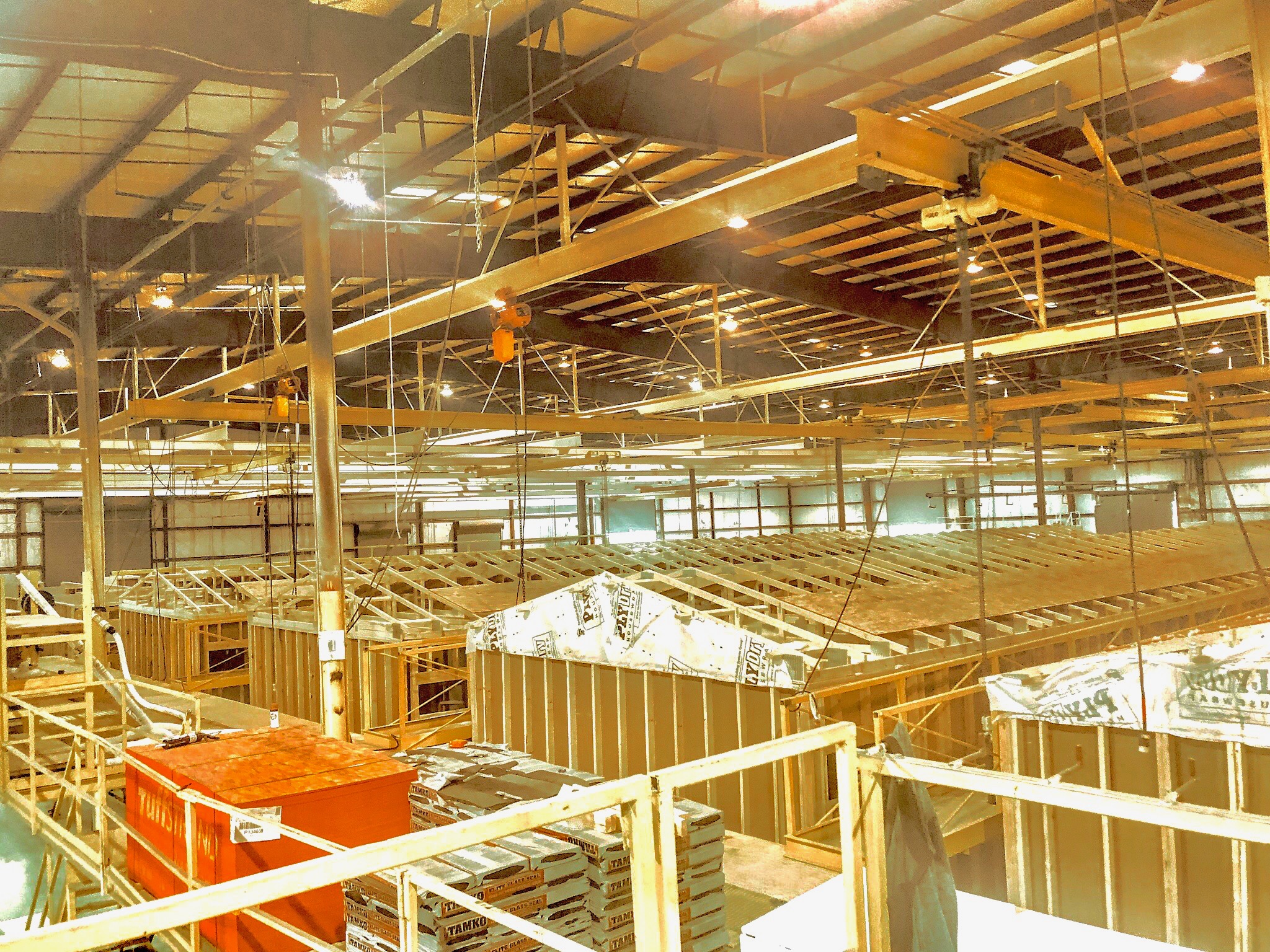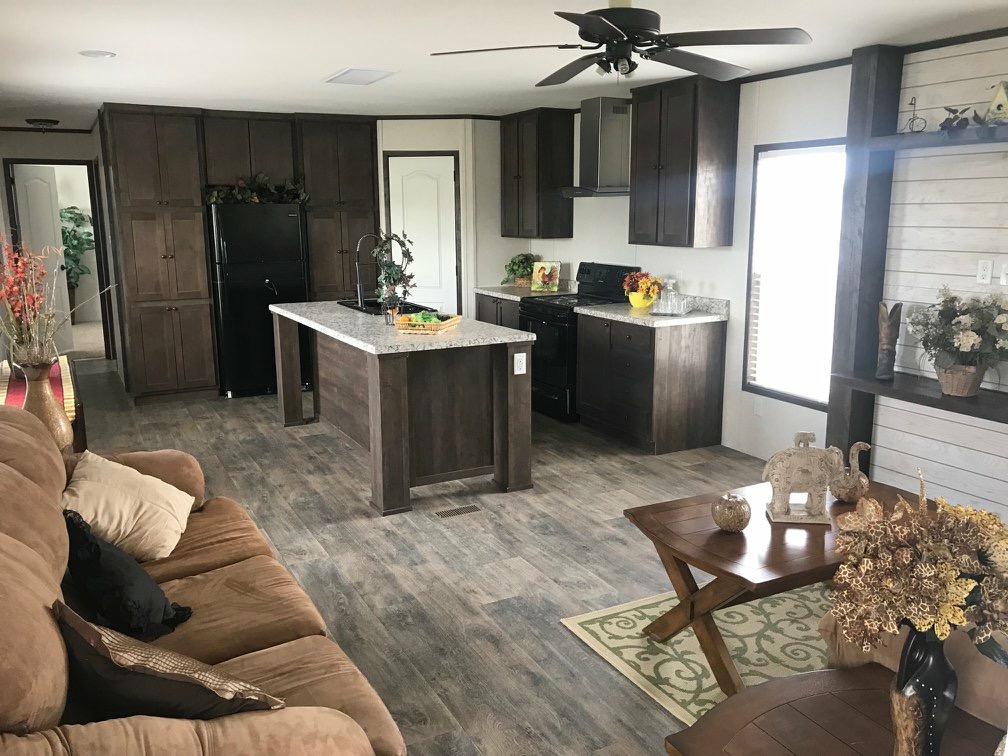The Permian Basin oilfield housing/hospitality sector keeps on building.
By Paul Wiseman
“There’s no place like home,” was the mantra prescribed to transport Dorothy back to Kansas. For shift-working Permian Basin oilfield workers from Kansas or just elsewhere in Texas, they’re away from home so much they may not know what home is. But there’s a need for a home of some sort when they’re working that shift. With weeks-on/weeks-off rotations the norm, housing those workers has become a billion dollar industry. From sector leaders like Target Lodging to go-getter entrepreneurs with a few homes to lease to executives, temporary housing has become—pardon the pun—a cottage industry of its own.
Target recently entered into merger agreements with Platinum Eagle Acquisitions Corp. and RL Signor Holdings LLC to form “the largest provider of specialty rental accommodations with premium catering and value-add hospitality services in the United States,” according to a company press release.
Housing and hotel markets in the Permian are stretched to the breaking point, and the casual observer might think this creates even more need for oilfield solutions. But Target’s CCO, Troy Schrenk, says his company doesn’t compete directly with houses or apartments.
“When we think about the workforce in the Permian Basin, they’re largely on a rotational basis, and the customers that we support are really looking for a provider that can give care, food, hospitality, and services the other 12 hours [in which] their employee is not working for them. That’s where it’s different” from the home purchase market.
Specifically, housekeeping, food, and activities are part of the need for rotational workers. “It’s a hospitality program that’s designed specifically for this type of workforce,” Schrenk continued.
The remoteness of many area wells does play a part in housing opportunities, “given that it [the Permian] is almost the size of the United Kingdom, [yet] with a population of less than 500,000.” Target has about 9,000 beds in 15 communities in the Basin as a whole, with almost 3,000 of those in the Midland-Odessa MSA. There are two communities in Odessa and one in Midland.
When the business combination is completed, the merged company will have 13,000 beds in 22 communities, all in the United States. A little math shows that the great majority of Target’s beds lie in West Texas.
Part of the company’s goal in choosing their locations is to economize workers’ travel time. “We’ve established a network of communities that cover the south [Permian Basin], all the way to the north up into Carlsbad—to the east, to Midland, then all the way out west to Pecos, Mentone, and Orla, and Big Lake, in the Rankin area, to Barnhart,” said Schrenk. This allows companies to move employees from community to community as their work locations change.
Schrenk noted that their Basin business was strong even during the downturn of 2014-15, while other areas such as the Bakken and Eagle Ford suffered. In 2018, he said, there’s renewed growth in the Bakken and elsewhere.
Workers are now coming from all over the world, said Schrenk, which was not the case in the 2012 boom. And there are other demographic changes in the works. Up to 20 percent of the workers staying in Target’s facilities are women, and about 24 percent work for the government instead of in the oil patch.
In many places, they also provide stand-alone services apart from lodging. These include site and hospitality services such as facilities and property management and food. “It’s just a natural part of what we do, and there’s pretty robust demand for those stand-alone services, even without the lodging,” he noted.
The company looks for continued growth in the area, with Schrenk commenting, “I still think it’s the early innings of that basin, especially when you start seeing some of the long-term investments that the supermajors and majors are making there, and they’re really just getting started.”
Not lost on Schrenk was the irony of saying that a region that’s been producing for more than 90 years is “just getting started,” but regarding the unconventional revolution, the point is well taken.
There are other companies meeting other housing needs as well. For executives, a stay at a large-scale workforce housing unit would be rare—mainly because executives generally spend more time in the in-town office than in the field. Accommodating management people for a few days to a couple of weeks is the goal of Miotracasa’s Janie Snelson and business partner Kim Womack, who own two homes—one is a two-bedroom, the other is a three-bedroom—that they lease out. Snelson and her husband, Steve, own two other executive rental homes apart from Miotracasa.
Though Miotracasa currently does their leasing through AirBNB, they’re looking to move toward leasing directly to corporations. AirBNB allows them to make rate adjustments to find the perfect balance between occupancy rates and customer value. “We’re trying to reach the perfect utilization to make the perfect profit while keeping within the rental ranges of [clients’] own company guidelines.”
Their target market is “the executive who travels, and travels every week—they want this. We also do concierge shopping for them if they need it,” Janie Snelson explained.
To that end they carefully choose neighborhoods in which to acquire properties, maintain an executive-level décor, and offer high-end services. Janie added, “We would like people to walk in and feel like it’s their house, that it’s taken care of, that they can trust us. We offer more.
“Nine times out of ten, we’re leasing to CEO/company owners —I don’t think we’ve deviated from that at all.”
Noted Steve Snelson, “We’re interested in people that can manage themselves, and the properties are at that level.”
The trust/repeat factor led to the choice of name for the company, she said. “The reason we named it Miotracasa [‘my other house’ in Spanish] is that guys were always calling and telling us, ‘Hey, somebody’s going to be there on Saturday or Sunday, would you have your housekeeper clean at my other house.’ That’s where the name came from,” said Janie.
After buying the first house in May and beginning to lease it in July after completing renovations, they’re already getting multiple repeat guests.
For the future the Snelsons and Womack are looking to expand, by buying “houses that have good bones, that are easy to fix [and to] hold for the future. We love our houses.”
Which at some future point will present a challenge in staffing up to keep up with cleaning and maintenance. Currently they and a few close friends do the majority of the cleanup during occupancy turnover. This requires a lot of in-town time. Steve Snelson noted that they are training associates who could take over some of the work as the inventory grows.
Have there been surprises in this undertaking? Janie reported the biggest surprise as being “The fact that guys will sleep anywhere, they don’t care, they just want a roof. One company, coming in for an industry event which caused all hotel rooms to be filled up, wanted to crowd several guys into one home, but Snelson talked them into spreading into both houses because Miotracasa limited the headcount in each house.
The best part, said Steve: “It’s the hospitality aspect of this, we actually both like it.”
Major providers whose bed counts range in the hundreds and the thousands need someone to build those largely modular units. In 2018, Oklahoma-based mobile home builder New Vision Manufacturing saw an opportunity to adapt what they were already doing for entry into this market. Later that year they opened a factory in Breckinridge, Texas, to build units for sale in the Permian and other Texas basins.
Managing Partner Kyle Williams had been in the mobile home finance business since 1990. At one point he also ran 90 mobile home parks in eight states. He then started RGN Services to provide new and used inventory to the oil and gas industry and to mobile home park owners.
Another partner had been providing onsite mobile production unit housing for drillers and geologists for a number of years. This partner had begun building his own units two to three years ago at a factory in Oklahoma.
In early 2018 a large factory space in Breckenridge became available and about the same time the two investors located an experience factory manager to run the day-to-day operations. They began building units in Breckenridge in November of that year.
Initial orders were for 110 units headed for the Permian Basin, getting the factory off to a strong start.
The Breckenridge plant’s Assistant General Manager, Jeff Baker, says the location employs about 70 people, some of whom drive from as far away as Abilene. The small workforce in Breckenridge allows New Vision to pay a competitive wage without facing the rising pay scales they would contend with in Midland/Odessa, but it does mean reaching out beyond Breckenridge to fill their ranks.
The factory is 136,000 square feet, which Williams says makes it the largest manufactured-home factory in Texas. “We were extremely fortunate to get our hands on this facility, for sure,” said Baker.
While they’re willing to build anything from tiny houses to production units, their main focus is on four styles of production units for drilling contractors and “man camp units—that’s the 100 units we’re building right now,” said Williams. “They’re either 18 by 80, 6-bed, 6-bath or 5-bed, 5-bath, with a utility room for washers, dryers, or 5-bed, 5-bath with a full kitchen.”
The minimum order for custom builds would be 5-10 units.
In the next few years Baker looks for strong growth in the company’s four main target areas: oil and gas, tiny homes, units for street dealers, and manufactured housing. “I think our goal is to be at about 180 employees by next summer at this location,” he said.
This is further proof that the huge growth in the oil and gas industry in the last 10 years has provided fertile ground for an expanding array of support industries, creating more and more jobs in its wake.
Paul Wiseman is a freelance writer in Midland.













